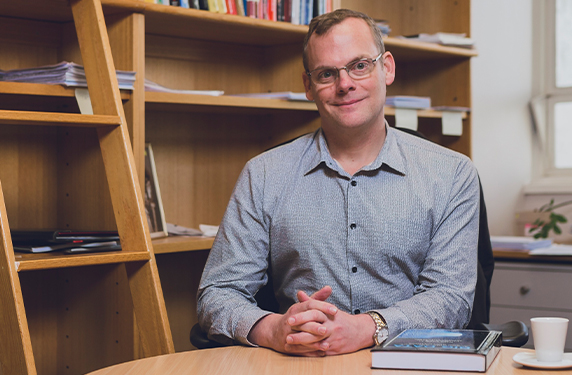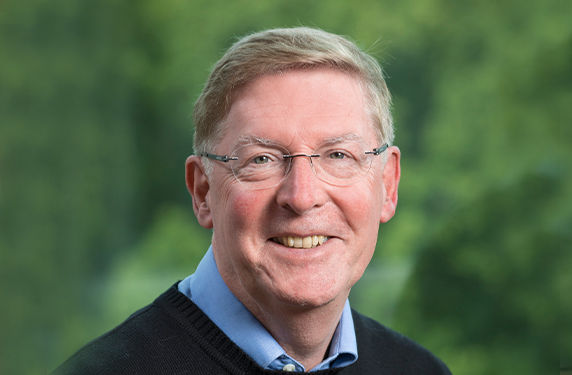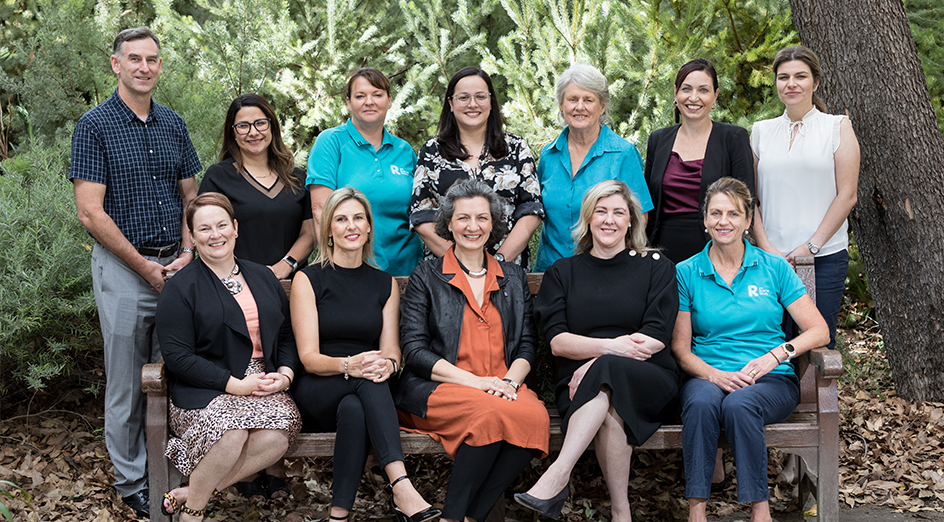As big data changes the way we live our lives, UWA is leading the way in ‘finding the signals in all of the noise’.
It’s estimated that last year, humans produced an astonishing 2.5 quintillion bytes of data every day. Every second, all over the world, there are 127 new devices connected to the internet. Google records over 3.5 billion searches daily. WhatsApp users exchange up to 65 billion messages every 24 hours. All adding to the almost incomprehensible digital data pile.
The challenge comes in tagging and analysing that phenomenal amount of data. As the power of analytical tools increases, the ability to identify crucial patterns is becoming faster and more accurate, so that hunches are replaced with insight; trends spotted before they pass by; and action taken to resolve questions that have hardly been formed.

A prototype array comprising antennas of the same design that will be used for Square Kilometre Array in Australia. Credit: Michael Goh / ICRAR
From helping to control famine, to climate analytics, mental health and suicidal ideation, resource distribution and bioinformatics, advancements in data science are helping decision-making in fields such as healthcare, manufacturing, energy efficiency, environmental sustainability, education and job training, transportation and R&D.
With world-leading capabilities and expertise in data intensive discovery across the areas of analytics, infrastructure and applications, UWA’s ability to apply a multidisciplinary approach to harnessing and mining big data is paying dividends and leading to new partnerships across every sector of our community.
Here are just some of the ways the University is helping to untangle the data explosion.
Fighting against disease
Professor Michael Small
CSIRO-UWA Chair of Complex Engineering Systems
UWA School of Mathematics and Statistics
It’s not a link you’d perhaps automatically make: mapping big data sets to understand and help prevent the spread of infectious and often catastrophic diseases, but big data analytics has become a crucial component for the modelling of the COVID-19 virus transmission - aiding in infection control and the emergency response both locally and internationally.
For UWA’s Complex Systems Group, made up of world-class mathematicians, statisticians, computer scientists and engineers who apply a wide range of mathematical and computational modelling techniques to unlock the patterns in large and complex data sets, predicting the spread of disease is not new.
While their work has never been more relevant than today as the world grapples with a global pandemic, it was in modelling SARS, another deadly coronavirus that originated in China and is genetically near-identical to COVID-19, that gave Professor Michael Small and his team their first chance to study global super-spreading events.
"By measuring the full scale of what happens when people stop moving, we’re able to accurately forecast the likely spread of diseases like COVID-19 in the community."
Professor Michael Small
“In SARS, as well as with COVID-19, the agent of infection is often less important than the nature of the network it travels on,” Professor Small said. “Data-intensive science allows us to map that interaction across entire communities, using data from mobile phones, location, demographic and travel apps, social media, medical and health records – all a rich source of information.”
Work by the UWA team led to new insights into the spread and management of SARS, putting them “about 18 years ahead of the curve” (and a 2006 study by Michael Small onto the front page of the Wall Street Journal). It has seen some in the team focus this year on how to protect vulnerable remote Western Australian communities from COVID-19.
“We’re specifically looking at the potential for transmission in Indigenous communities in the Kimberley – there is a naïve impression that remote means safe but our work shows that the significant movement that occurs between these communities and regional and urban centres allows for infection to spread quickly,” Professor Small said.
As one of Australia’s most published mathematicians who’s spent his life developing and applying modern mathematical techniques to real-life problems, particularly those traditionally considered ‘too hard’ to solve, the UWA alumni says the potential is endless when it comes to harnessing the power of big data.
“The information we get now at an individual level and advances in computational resources have led to marvellously detailed experiments during lockdowns. By measuring the full scale of what happens when people stop moving, we’re able to accurately forecast the likely spread of diseases like COVID-19 in the community,” he said.
Reaching for the stars
Professor Peter Quinn
Executive Director, International Centre for Radio Astronomy Research
It’s been described as radio astronomy on steroids. As Western Australia gets ready to host the Square Kilometre Array (SKA), one of the most important space projects on the planet, scientists are preparing for a data tsunami.
Not only will the world’s largest radio telescope allow astronomers to probe the beginnings of the universe some 13.7 billion years ago, the SKA is set to be the largest public data project ever seen.
Co-located primarily in WA and South Africa, the multibillion-dollar international project will include hundreds of thousands of radio antennas with a vast combined collecting area equivalent to one million square metres, or one square kilometre.
Once connected via fibre-optic networks to work as a single virtual telescope, the SKA will be able to survey galaxies 10,000 times faster than any other telescope in existence.
“We’ve never done anything on this scale before – no one human being, or stadium full of students, can deal with data of the scale that will come from the SKA.”
Professor Peter Quinn
Executive Director of the International Centre for Radio Astronomy Research (ICRAR) in Perth, UWA’s Professor Peter Quinn says ‘the unparalleled feat of human scientific endeavour’ will open the floodgates to a torrent of data roughly 100,000 times faster than the average home broadband speed.
Some will be analysed in a new $64.4m data centre in Perth, the Australian Square Kilometre Array Regional Centre (AusSRC), a collaboration between ICRAR, CSIRO and the Pawsey Supercomputing Centre, part of an international network of SKA regional centres designed to support the global flow of data and processing needed.
“We’ve never done anything on this scale before – no one human being, or stadium full of students, can deal with data of the scale that will come from the SKA,” according to Professor Quinn, a world-renowned astrophysicist.
“We’re talking about supercomputing facilities with one trillion times the computing power that landed men on the moon. It means we’ll be able to give scientists from all over the world access to data that may answer profound questions in astrophysics, cosmology and fundamental physics.” Perhaps, even, is there anybody out there?
Improving human health and well-being
Associate Professor Rebecca Glauert
Scientific Director, The Raine Study (UWA)
Emerging big data technologies have also meant big changes in healthcare as data, including hospital, medical and prescription records, are consolidated and analysed to discover trends, better treat patients and make more accurate predictions.
The landmark Western Australian-based The Raine Study has been tracking almost 3,000 children, their parents, grandparents and now their own children, for the past 30 years and is one of the largest successful cohort studies of pregnancy, childhood and adulthood in the world.
Established in Perth in 1989 to investigate how early-life factors during fetal development impact on child and adult health, it’s led to a phenotypic dataset containing more than 70,000 measures and over 20 million genetic variants on each participant, as well as biological samples and genome-wide genotyping data for children and their mothers.

The Raine Study team
As a result, it’s become an invaluable source for researchers, with the environmental, developmental and health research using its data published in more than 600 academic journals and contributing to the understanding of many aspects of public health, says the study’s new Scientific Director, Associate Professor Rebecca Glauert.
An internationally recognised expert in data linkage, she’s enthusiastic about the opportunity to connect more than 30 years of the Raine Study’s big data with publicly held datasets from across Australia, including school and hospital records.
“We’re at an exciting point, with four generations now in the study,” Associate Professor Glauert said. “Our babies who were in utero when recruited by their mums and dads are now having their own kids – it’s amazing to have such a huge amount of biological information.
“While traditionally health data has been siloed, we’re hoping that by linking all of the data we have with other areas like justice and education, we’ll have a remarkable base of knowledge. This means we’ll to continue to be able to explore how environment and events from the womb onwards impact health outcomes not only in childhood, adolescence and early adulthood, but increasingly into mid-life and elderly life stages.”
